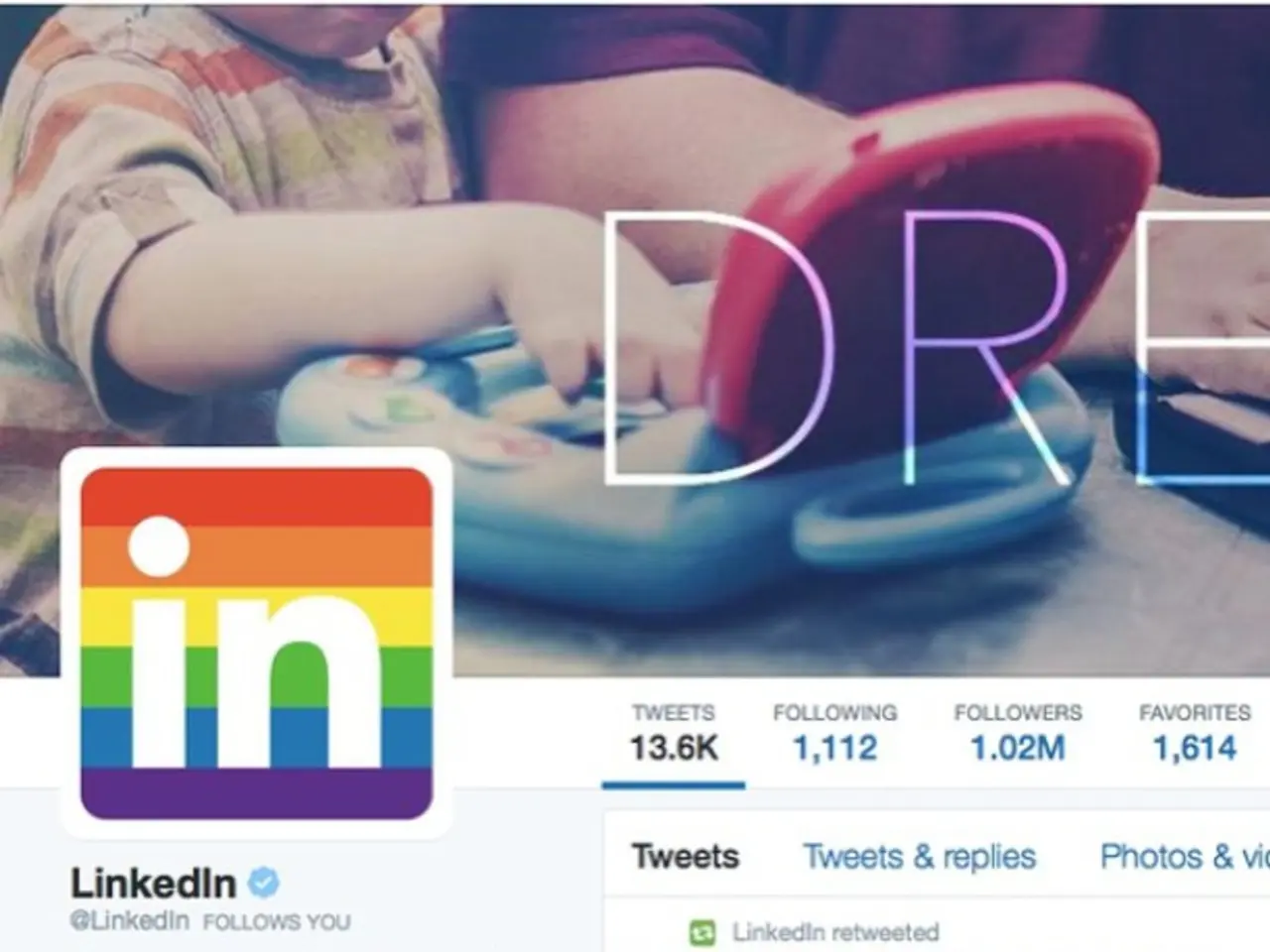Enhance Your LinkedIn Presence: Creating a UX Design Portfolio That Attracts Potential Clients and Leading Recruiters
## Title: Optimising Your LinkedIn Profile for UX/UI Design Success
In today's digital age, LinkedIn has become a crucial platform for UX/UI designers to showcase their skills and attract top recruiters. Here's how to make your profile stand out:
### The Basics
1. **Professional Headshot and Custom Banner:** Use a high-quality, recent headshot that exudes professionalism and approachability. Avoid vacation or blurry photos. For the banner, showcase your design skills or highlight a key project, reflecting your personal brand visually.
2. **Compelling Headline:** Instead of the default "UX/UI Designer," use a headline that highlights your specialties and achievements, such as "UX/UI Designer | User Research | Interaction Design | Increased User Engagement by 40%." Incorporate relevant keywords like "user experience," "interface design," and "usability testing."
3. **Concise, Keyword-Rich Summary:** Write a summary that clearly states your expertise, design philosophy, and the value you bring. Use bullet points for readability and include industry-relevant keywords like "wireframing," "prototyping," and "user-centered design." Mention the types of opportunities you're seeking.
### The Experience Section
1. **Specific, Achievement-Focused Descriptions:** For each role, briefly describe your responsibilities and highlight measurable outcomes. Include keywords relevant to UX/UI design throughout.
2. **Showcase Projects:** If possible, add multimedia (images, links to prototypes, case studies) directly in your experience entries. This provides tangible evidence of your skills.
3. **Skills & Endorsements:** List key UX/UI skills (e.g., Figma, Adobe XD, usability testing, user interviews) and prioritise those most relevant to your target roles. Seek endorsements from peers and managers.
### Additional Profile Elements
1. **Recommendations:** Request recommendations from colleagues, clients, or professors that speak to your design skills, collaboration, and impact.
2. **Publications & Posts:** Share articles, case studies, or insights about UX/UI trends. Regular posting with relevant hashtags and keywords increases visibility and establishes your thought leadership.
3. **Education and Certifications:** Highlight relevant degrees, bootcamps, or certifications (e.g., Nielsen Norman Group, Google UX Design Certificate).
### Profile Maintenance
1. **Regular Updates:** Keep your profile current with new projects, skills, and achievements.
2. **Engage with Your Network:** Comment on industry posts, join UX/UI groups, and connect with recruiters and leaders in your field.
3. **Review Competitor Profiles:** Analyse profiles of successful UX/UI designers in your network for inspiration and best practices.
By following these steps, your LinkedIn profile will not only attract top recruiters but also clearly communicate your unique value as a UX/UI designer.
- A strong understanding of information architecture is vital for organizing and presenting content effectively within a design, a key aspect in UX/UI Success.
- UX research and user-centered design play significant roles in understanding the needs of users, which helps create intuitive and effective interfaces.
- Design thinking is an essential skill for UX/UI Designers, as it helps to empathize, define, ideate, prototype, and test solutions for users.
- A/B testing is a crucial method for measuring the impact of design changes on user behavior, offering insights to optimize user experience.
- Interaction design is the practice of designing the manner in which users interact with a digital interface, enhancing usability & user engagement.
- Lifestyle, technology, and education-and-self-development are hot topics to explore and discuss in UX/UI Designer communities, providing valuable insights for career-development and skills-training.
- A well-optimized LinkedIn profile serves as a digital portfolio for UX/UI professionals, aligning design aesthetics with professional branding and showcasing the user-oriented approach that embodies the principles of UX/UI Design, UI Design, and career success.




